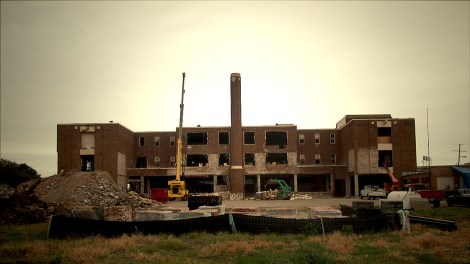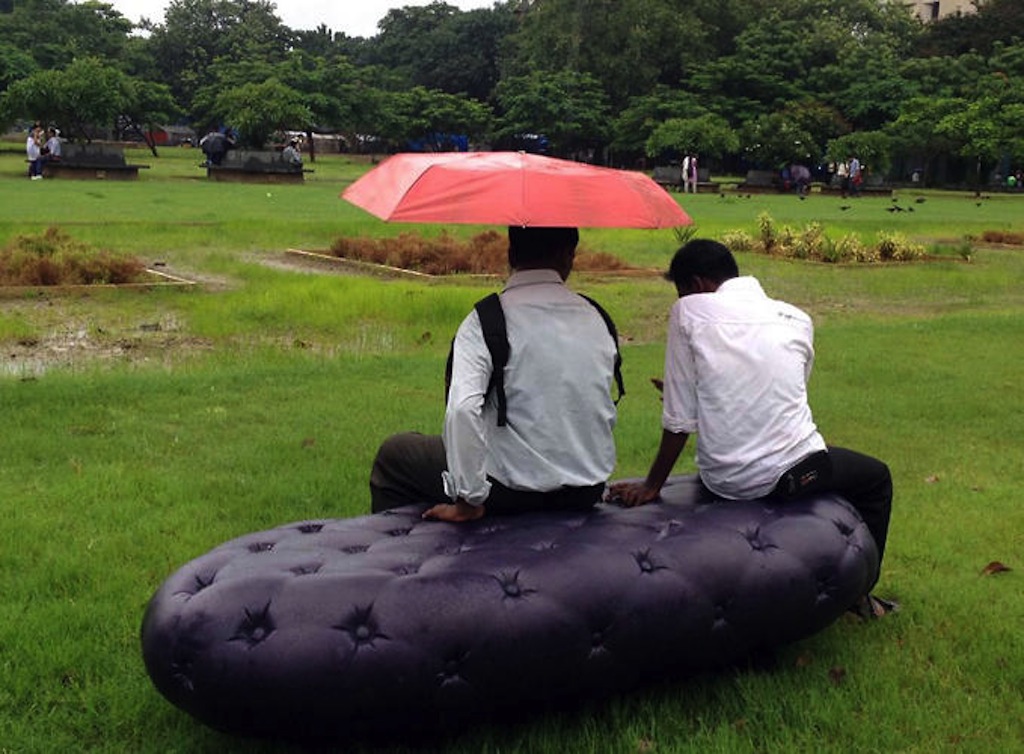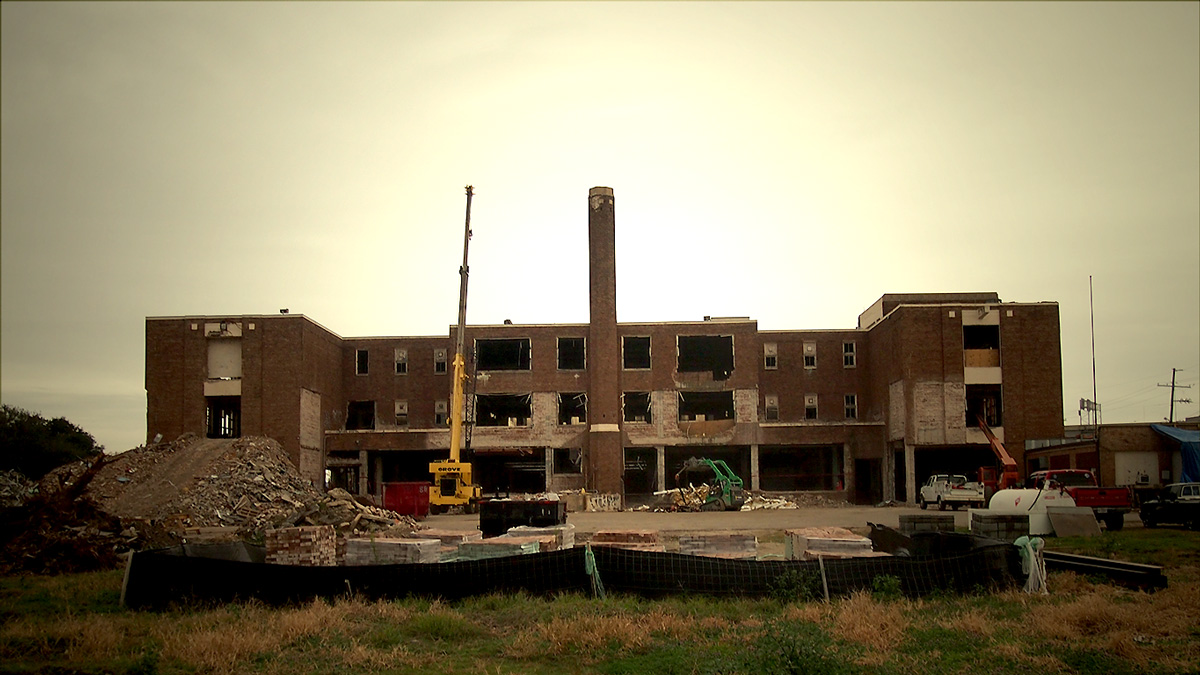
Anthony TurduckenThe original Booker T. Washington High School was razed to make way for a new mega-school — then developers discovered the mess.
Initially, James Raby just wanted to save his school, Walter L. Cohen High, in New Orleans. Named after a prominent black businessman and political leader, the school sits in one of the more diverse neighborhoods in Uptown New Orleans, and has served a mostly black student population. Raby graduated three years after it opened in 1953.
Cohen High was one of the first schools to reopen after Hurricane Katrina, but it has struggled to stay alive since then. The school was in one of the few neighborhoods that didn’t flood, so it was filled with a lot of students dealing with the traumatic stress and disorder that came with Katrina. Since 2006, it’s had three different administrative operators, at least a half-dozen principals, and a ton of teacher layoffs as a consequence of the shifting leadership.
[grist-related tag=”polluted-schools” limit=”20″]
No surprise, then, that the school has struggled academically. National Geographic spent six months filming there in 2008 and labeled it one of the most dangerous schools in America.
Cohen High was not included in the city’s “Plan for the 21st Century,” the post-Katrina reconstruction strategy devised through a city-wide community participation process to decide what would be rebuilt and how. The state wants to shutter it completely by 2015, and send the students to a new mega-high school, called Booker T. Washington, that is slated to be built about two miles away.
The Walter L. Cohen Alumni Association, over which Raby presides, opposes moving its alma mater to the new high school, arguing that, with the right leadership, Cohen High’s small class sizes could lead to better academic performance than a larger school. And as Raby learned during his campaign to keep Cohen alive, environmental assessments of the soil at the new site show high concentrations of dangerously toxic metals, including lead, arsenic, chromium, mercury, and barium.
Now, Raby’s mission has changed from saving his school to saving any student from having to go to a school that’s planted on contaminated land.
The site for the new school was once home to a city dump called the Silver City Landfill. In the 1930s, it was cleared out under a Works Progress Administration program, and in 1942, it became the site of the first high school built for African Americans in New Orleans, also named for Booker T. Washington. The school was closed in 2004 due to disrepair, and except for an auditorium and a random stairwell, none of the original school buildings still stand.
Developers discovered toxic earth in the area two years ago while razing nearby public housing projects to make way for a new mixed-income housing development. As Katy Reckdahl reported in the Times-Picayune at the time, the area was “a city dumping area” that contained underground storage tanks before the public housing was built. There was also a municipal incinerator nearby. Today, there are crowds of old and barely operating car repair shops and former industrial warehouses. The heavy car- and truck-trafficked Earhart Blvd runs up it’s east side, serving as a divider from old train tracks and rundown brownfields just off the other side of the road.
Just the spot to build a school for poor black kids.
“Schools built on contaminated sites are built to house children of color and low income,” Raby says. “When Booker T. Washington was first built, there were racial overtones over it. It was no accident that it was built right next to the predominantly black Calliope housing projects. The intent was to keep all the black folks in that one area.”
It wasn’t the only time New Orleans built a school for mostly black kids over a waste hole. On the other side of town, the Agriculture Street Landfill was the dumping ground for a lot of city debris, especially after Hurricane Betsy in 1965. Soon after the landfill was closed, two federally financed housing developments were built over top of it. In 1985, Robert Moton Elementary was built there. It didn’t last long. Students came down with rashes, nausea, and other health problems that EPA later connected with the arsenic, lead, and polycyclic aromatic hydrocarbons that were legacies of the former landfill. Today, the school is closed and the area has been classified a Superfund site, unfit for any new construction pending a major cleanup.
The same type of remediation is needed for Booker T. Washington, says Raby, who has gathered his school’s alumni association and attorneys from the Advocates for Environmental Human Rights (AEHR) to make his case. For the new campus, which will cost $55 million to build, the state’s Recovery School District commissioned an environmental assessment from a company that recommended a “low-balled, minimum-effort-required” remediation plan that failed to take into account the children and elderly residents who live around the school, according to Monique Harden, co-director of AEHR.
Harden outlined the problems with the school district’s plans in a 10-page letter she sent to the state’s department of environmental quality, which argued that the plan violates federal and state civil rights and environmental justice policies. Since then, the state has directed district to take a deeper look at the contamination problems and come up with a suitable plan to fix them.
The impacts of soil contamination on children of color is no small matter, especially in New Orleans. One of the nation’s top researchers on the topic, Howard Mielke of Tulane University, has documented the effects of lead and other toxic metals for years. In a recent study, he spelled out how such effects are exacerbated when race and socioeconomic factors are figured in, and to the detriment of poor, black kids. Other scientists have shown corollaries between poor academic performance or behavioral problems in students with long-term exposure to toxicity in the air and land around their schools, even how it may be tied to violence.
If the school district is so confident that the new Booker T. Washington building site is safe for students, Raby has an alternative proposal — this one involving a high school called Lusher, not far from Cohen, that has a huge white student population: “If you are determined to build this new school on a contaminated site, I suggest you move the Lusher students there and see what their parents and teachers say,” Raby says. “Would you send your children to that same school on that same contaminated site? If your answer is no, then why would you send mine?”



